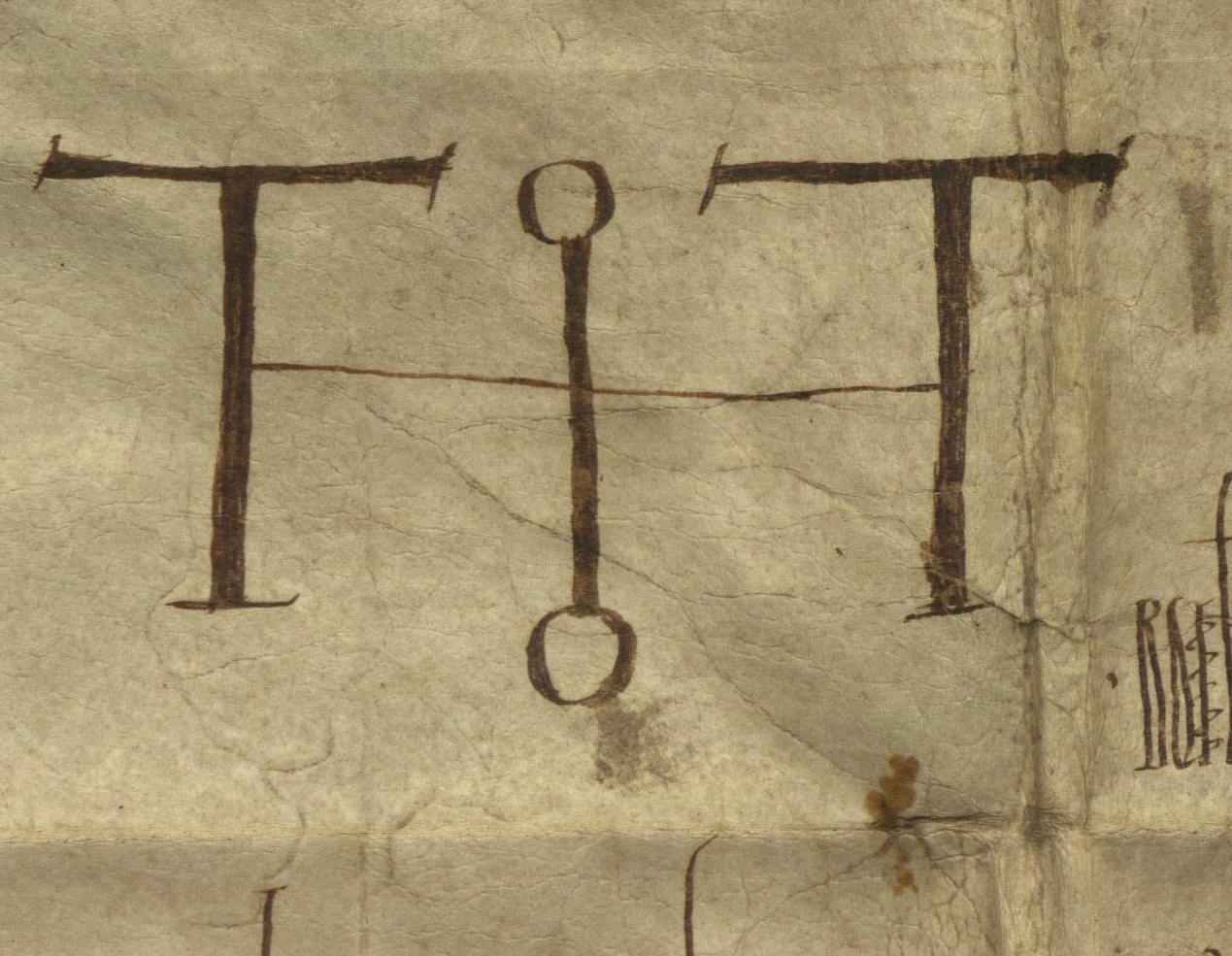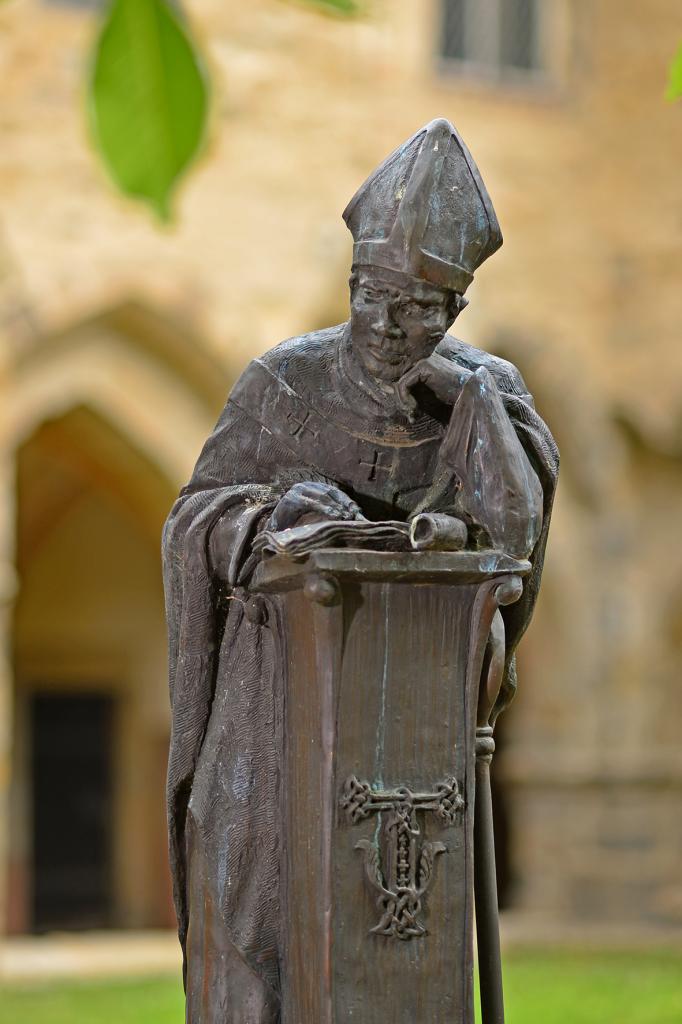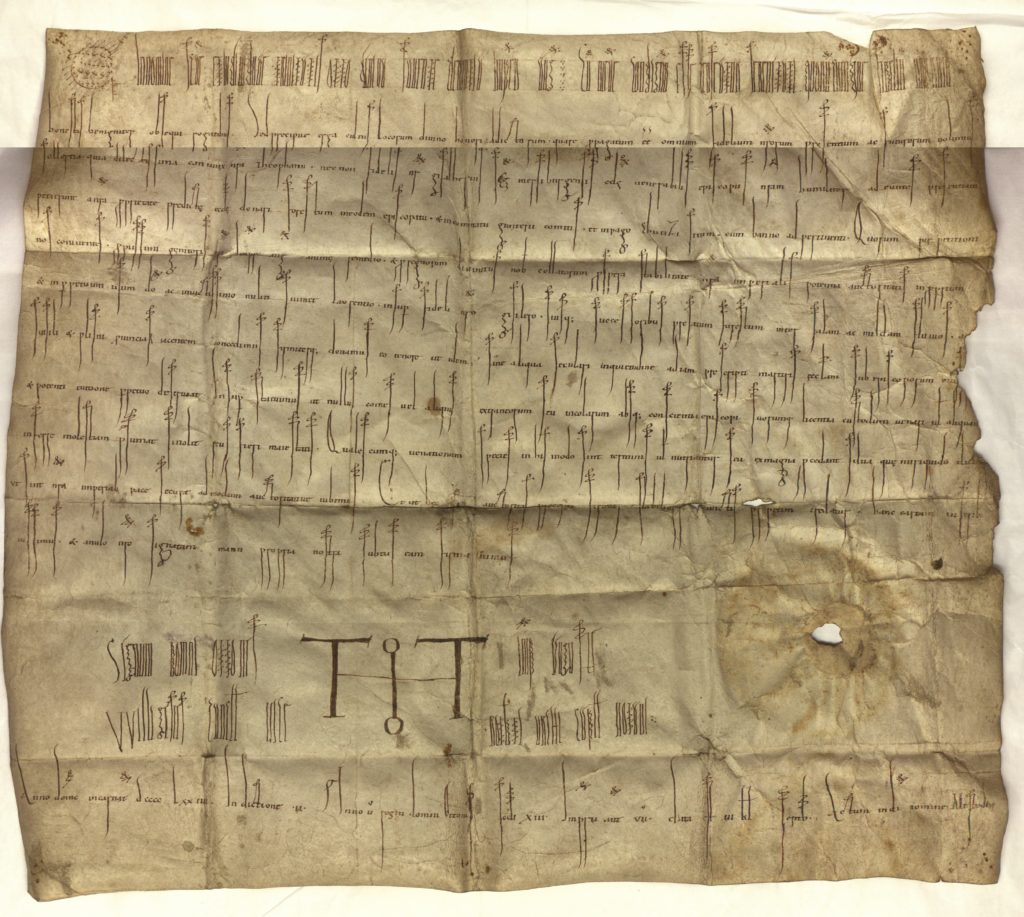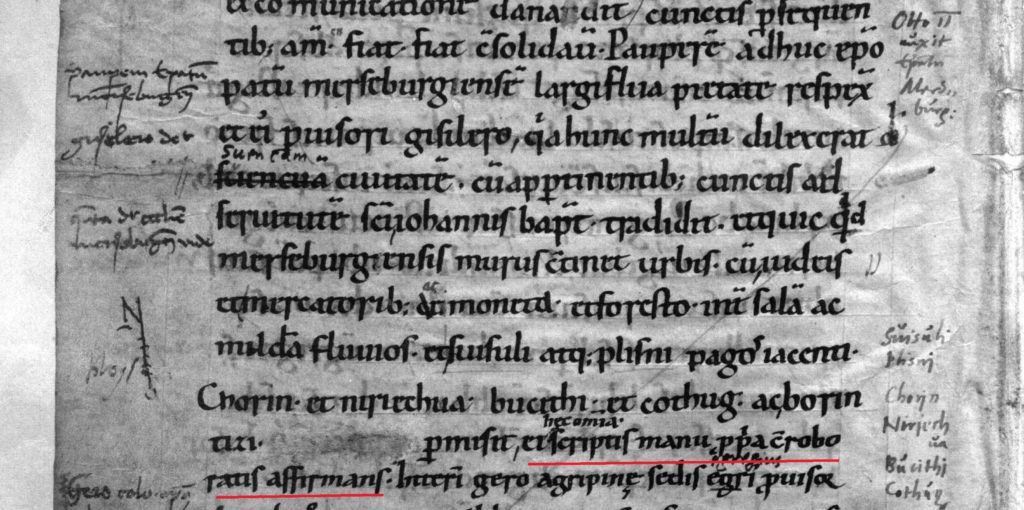
Posted by Levi Roach
24 March 2020One of the most striking discoveries of modern scholarship on medieval European documentary traditions has been just how widespread forgery was. Almost every major religious house was involved in falsifying documents at some point; and many witnessed multiple waves of forgery. Those responsible were not backstreet rogues, but leading members of the ecclesiastical establishment – abbots and bishops, scholars and schoolmasters.

A case in point is Thietmar, bishop of Merseburg between 1009 and 1018. Thietmar is best known to modern students as the author of a chatty chronicle, which furnishes our most detailed narrative of socio-political developments within Germany in these years. Yet Thietmar was not simply a historian; he was also a forger. To modern eyes, these may seem like very different activities: the historian seeks to illuminate the past, the forger to obscure it. In the European Middle Ages, however, they went hand-in-hand. One of the main purposes of narrative history was to secure the rights and reputation of the family or (more often) religious house in question; and so it was with Thietmar. His bishopric had been dissolved in 981 and refounded in 1004, only five years before his own appointment. In writing his Chronicle, Thietmar sought to justify the act of refoundation and lay claim to episcopal rights lost in the intervening years.
It’s here that forgery came in handy. A chronicle might set out a programmatic case for restoring rights, but such arguments were unlikely to gain traction without documentary proof. And so it was that Thietmar came to produce a diploma in the name of Otto II (r. 973-82), claiming to grant the forest of Zweckau to Merseburg. A real document to this effect may once have existed. But this is not it – it’s clearly a fake, modelled on an authentic diploma of 974 (also in favour of Merseburg).

That this document is a forgery has long been known, as has Thietmar’s involvement in its production (he writes about the diploma at length in his Chronicle). What has escaped notice is one of the more subtle signs of falsification. When recounting the grant of Zweckau, Thietmar lays great store the fact that Emperor Otto II confirmed the diploma ‘with his own hand’ (manu propria: see image below).

This is an allusion to the process by which the royal/imperial monogram at the bottom of the diploma came into being. Alongside the seal, the monogram was the main means of authenticating a document. And particular importance was accorded to the so-called completion stroke (German: Vollziehungsstrich) here, the final cross-stroke, which would only be drawn once the grant had been approved by the ruler. Some kings took on the duty of drawing this final stroke themselves, as Thietmar’s account suggests. But this was not a universal practice, as modern scholarship has noted. Within the Ottonian period, Otto III (r. 983-1002) seems to have been the first to do so regularly, starting in the mid-990s; thereafter Henry II (r. 1002-24) also periodically did so. Earlier, there are few if any signs of such autograph completion; then the norm was for the scribe responsible for the closing elements of the diploma (the eschatocol) to produce the entire monogram.

Why does this matter? Because Thietmar’s forgery creates the impression of autograph completion (as mentioed in his Chronicle): the cross-stroke on the monogram is notably thinner than the other vertical and horizontal strokes, suggesting that it has been added in a separate stage. Yet here Thietmar has been too clever by half. In aiming for verisimilitude, he has fallen into subtle anachronism, presuming that the documentary practices of his own day were prevalent in the 970s. His contemporaries may have been fooled, but Otto II wouldn’t have been.